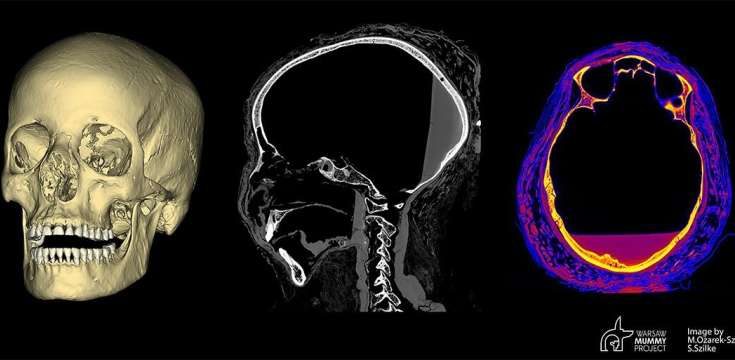A team of researchers with the Warsaw Mummy Project, has announced on their webpage that a mummy in their collection that has come to be known as the Mysterious Lady may have had nasopharyngeal cancer.
The mummy, which made headlines last year when researchers discovered she had been pregnant at the time of her death, was found in Thebes (now called Luxor) in Egypt sometime in the early part of the 19th century and was subsequently donated to the University of Warsaw in 1826. The sarcophagus holding the mummy was only recently opened for study.
One of the first things researchers on the team noticed when they opened the sarcophagus was that the mummy was female—all signs on the outer part of the coffin had indicated that it held a male priest. More work showed that the mummy was from the first century BCE and that she had also been pregnant at the time of her death (the first ever mummy found in such condition), though that finding has been called into question by others in the field. In this new effort, the researchers have been focusing on the mummy’s head.
In taking X-rays and CT scans of the head and using them to create 3D representations of the skull, the researchers found what they describe as possible evidence of nasopharyngeal cancer—a type of cancer that originates in the back of the nose and in the throat. They also found what they describe as a hole behind the left eye, possible evidence of a metastatic tumor. They go on to suggest that if the woman did have the neoplastic disease, it could have led to her death.
The researchers acknowledge that much more work will need to be done to confirm that the Mysterious Lady had cancer, and perhaps died from it. They note that nasopharyngeal cancers are much more common in people from East Asia and Africa. They also suggest that further study of the mummy could help lead to new understandings of how cancer gets its start because the Mysterious Lady, unlike people of today, was never exposed to many of the toxins in our modern environment.
#Mummy; #MysteriousLady





